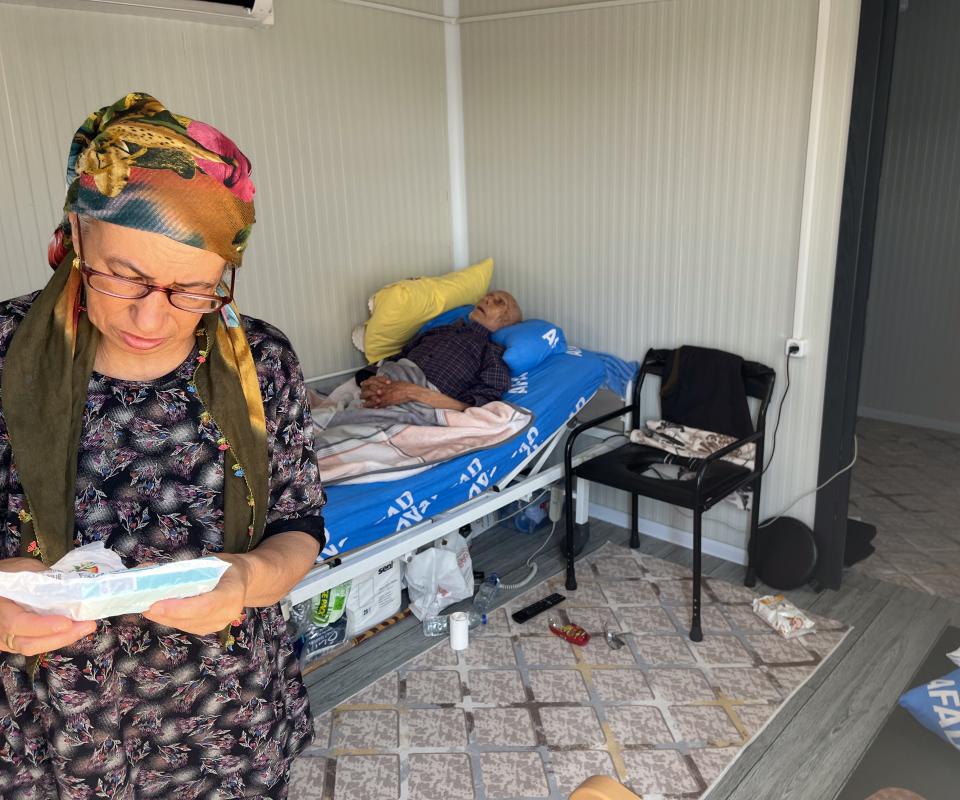
AZ Sint-Jan limits the number of neurosurgical operations thanks to O-arm
The Neurosurgery division of the Sint-Jan campus in Bruges has a new acquisition: an intraoperative CT scanner. It was donated by the JE Foundation Fund, which is managed by the King Baudouin Foundation.
“We have been dreaming for years of having one of these machines.” In late summer 2020, an intraoperative CT scanner - also called an O-arm due to its shape - arrived at the Neurosurgery division of Sint-Jan campus in Bruges. As the name suggests, the machine makes it possible to carry out CT scans during operations, offering major benefits for both the doctor and the patient.
The machine was donated by the JE Foundation Fund, which was set up within the King Baudouin Foundation last year by Joris Ide and Eveline Deprez. “Our overall motivation is to give something back to society, to do something significant for others, as a way of showing our gratitude for the opportunities we have been given.” As well as putting their own resources into the Fund, they chose to include their wide circle of friends and acquaintances through fundraising events. “This gives us opportunities to tell people about the initiative, to show how significant it could be for the future of all of us if we work together to support good projects. Making a small contribution to make the world a better place also brings happiness, and we hope others will be motivated too when they see this.” The fact that the Fund is managed by the King Baudouin Foundation offers donors a guarantee that all their donations will be spent on projects.
Reducing the number of neurosurgical operations
It is not a coincidence that the Fund’s first initiative was to donate the O-arm. Eveline Deprez and her son Enzo Ide have both faced neurological problems in the past, and they have found the doctors at AZ Sint-Jan to be a dedicated team.
Dr. Alexander Janssen explains the benefits of the intraoperative CT scan: “Operations on the skull and brain often involve implanting devices. As surgeons we use a number of techniques for this, but none of them offers a 100 percent certainty that the implant is in exactly the right place, however experienced the surgeon may be. The same is true of neck and lower back operations, for example when screws are fixed to the spinal column: a number of studies have shown these are not in exactly the right position in about 10 percent of cases.”
Until recently this had to be checked on the day after the operation by means of a CT scan or X-ray. If it is found that an implant, screw or other implanted item is not in exactly the right place, the patient has to undergo another operation.
The O-arm means that most of these re-operations can be prevented. It acts as a navigation system, helps the surgeon to determine the desired position of the implant beforehand and then assists with its placement. During the operation a scan is also carried out to check if the implant is in exactly the right place. The surgeon can make corrections immediately if necessary.
Brain stimulation
The O-arm can also be used for patients who benefit from deep brain stimulation (DBS), for example people with motor disorders such as Parkinson’s disease and also specific pain syndromes, epilepsy etc. “In these procedures the neurosurgeon places electrodes in the brain that allow us to influence brain activity”, explains Dr. Alexander Janssen. “Once again we are able to prevent re-operations if we are able to navigate and carry out checks during the initial operation with the help of the CT scan.”
Thousands of patients
The team - including the nurses, who have undergone an extra training course - have already gained several months of experience with the O-arm. “The machine is totally meeting our expectations”, says Dr. Nikolaas Vantomme. “In the coming months, we will scale up the use to at least one operation every day, and probably often more than one. Things evolve quickly, but we are hoping that the O-arm will be the very best there is for at least five to seven years. We will be able to use it for thousands of patients, and it will allow us to prevent hundreds of re-operations.”
The future
“We will be able to use this machine during operations of thousands of patients, allowing us to prevent hundreds of re-operations.”
Clearly the first donation by the JE Foundation Fund has a significant future. The Ide-Deprez family is not only targeting health care with the Fund, and they remain open to consider other areas. With the involvement of younger generations, the Fund’s continuity is assured.
Other stories
Inspiring engagement!

Rebuilding Hope in Türkiye after the 2023 devastating earthquakes
"After the earthquake, we were devastated both financially and emotionally. Here we are trying to rebuild our lives with your support. I feel stronger now, we are in great solidarity with my neighbors and the institutions that support us, and this is good for us."

Pure & Just: Sustainable growth, meaningful partnerships and economic empowerment
Business for development

Four founders explain how the Business Partnership Facility supports their sustainable businesses in Rwanda and Senegal
Business for development
“The relationship between funder and grantee is important,. Social entrepreneurs are passionate about what they do. Trust is critical in the sense of empowering implementers. I experienced that trust and that was empowering, the feeling that I have control to take decisions that I see are right for us.”